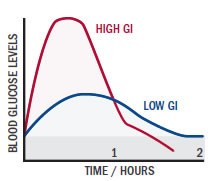If you’re monitoring your diet, especially regarding blood sugar levels, understanding carbohydrates is crucial. When you eat carbs, they impact your blood sugar, but not all carbs are created equal. The type of carbohydrate and how quickly your body digests and absorbs it plays a significant role in this impact. Foods that cause a rapid and significant spike in blood sugar are known as High Glycemic Index Foods.
Choosing foods wisely can significantly affect your blood sugar control, weight management, and overall health. Opting for healthier carbohydrates is linked to preventing chronic conditions like diabetes, heart disease, and certain cancers. The glycemic index (GI) is a valuable tool that can help you make these informed food choices.
Decoding the Glycemic Index: High vs. Low
The glycemic index (GI) measures how much a specific food raises blood sugar levels compared to pure glucose. Glucose, with a GI of 100, is the benchmark. Foods are then ranked on this scale to indicate their effect on blood sugar.
- High Glycemic Index Foods: These foods have a GI of 70 or higher. They are rapidly digested and absorbed, leading to a quick and substantial increase in blood sugar levels.
- Moderate Glycemic Index Foods: These fall in the range of 56 to 69. They cause a moderate rise in blood sugar.
- Low Glycemic Index Foods: With a GI of 55 or less, these foods are digested and absorbed slowly, resulting in a gradual and gentler increase in blood sugar.

